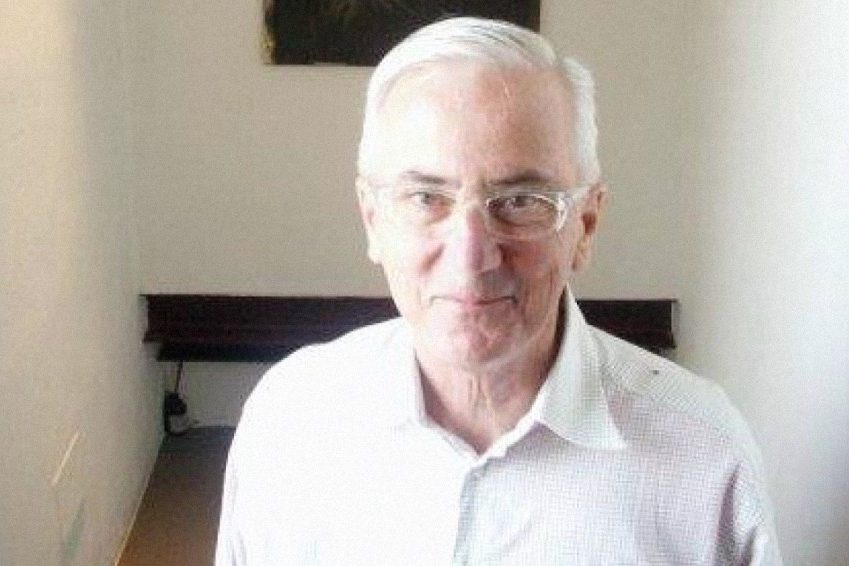The creative unit Cyop&Kaf are urban artists in the truest sense of the word. Not content to limit the avenues of their expression to street art, Cyop&Kaf moved on to photography, illustrated books, and most recently documentaries. They make their home in Naples, Italy where, over the past three years, they have been working in the impoverished Spanish Quarter.
The first result of their collaboration was a book, QS – Quartieri Spagnoli. Afterwards, the book morphed into a documentary, Il Segreto (The Secret), which tries to convey the complex reality of a contentious neighborhood, very much afflicted by prejudice.
One member of the duo decided to bring the documentary to San Francisco, as part of an American tour that includes Columbia, Missouri as well. The film was screened on January 22nd at the Museo Italo Americano, courtesy of Salvatore Visone of the EV Group, in collaboration with Consulate General of Italy in San Francisco and the Istituto Italiano di Cultura San Francisco.
Il Segreto was shot over two weeks in January 2013, featuring a children’s gang roaming through the streets in search of firewood to build a bonfire for St. Anthony’s day, which falls on the 17th of January. It is an old tradition that is passed down from generation to generation. To ensure the success of their project, the boys – whose ages range from 5 to 15 years old – start collecting spruce and discarded Christmas trees right after New Year’s day.
As shown in the film, the group stows their loot in a concealed place, hence The Secret, in order to protect it from raids by rival gangs. The film documents the gang’s frantic search, their camaraderie, their questionable relationship with adults and authorities, and their determination in reaching their goal, which brings them to undertake semi-illegal conduct, and often skip school. To ensure that their firewood is well protected, they even keep watch overnight.
Cyop&Kaf were also invited by the IIC San Francisco for the event “Rudders Adrift”, featuring the book Taranto – A year in the old city. Taranto, like Naples, is an Italian port-city that is both famous and infamous for contributing steel mills to its economy which resulted disastrous consequences for the inhabitants and their environment. The artists’ intention was to document their time spent in the city, painting abandoned and unused buildings, in order to return the city to its original state of dignity and vibrancy. To do so, Cyop&Kap often enlisted the help of local children, who initially found the artists amusing, but left with pride in their supporting roles.
Here are some of the artists’ insights on their own works.
Who are Cyop&Kaf, and how did your collaboration develop?
Cyop&Kaf is a duo who paint separately, but write in first person. We have been working for twenty years in the city of Naples, trying to “rewrite” it and redefine its spaces. With the same approach, over the last three years, we have painted walls, shops, and abandoned buildings of the Spanish Quarter. We have dotted the whole neighborhood with more than two hundred works and murals, which, all together, create a real path to a renewed identity. In fact, in both of our books, we included a map that indicates all of the cities’ spots that we have painted. Our works give passersby an excuse to explore spots that, more often than not, are considered dangerous and typically avoided. Also, we work together with ten other people, with whom we write and publish a monthly newspaper called Napoli Monitor.
What kind of artists are you?
We listen to the urban sounds of the environment we live in, and we paint accordingly. The murals offer a quirky deformation of reality, in which the inhabitants are not obliged to recognize themselves, but at the same time they can draw inspiration from them. Our works are not meant to be mirrors in which people admire themselves. They are rather “puddles” where anomalous reflexes and unknown vibrations can be glimpsed.
How was the documentary “Il Segreto” born?
By spending a lot of time in the streets, we developed a special relationship with the kids who actually spend their lives there. At first, we envisioned how we could tell their stories and show their point of view on the city they live in, by creating a group portrait that is not discriminatory or over-inflated. The final result offers a view of a very old tradition: the St. Anthony’s day bonfire (in Neapolitan: il cippo). Cyop&Kaf use this tradition as a lens to describe the relationship between the children and their city, the authorities, and the adults. Our goal was to make all the shades possible emerge, by avoiding prejudices and clichés.
Your documentary received several national and international awards. What do you think is the main reason why it gained so much attention by the critics?
Most likely the film was awarded because it shows some narrative tension, which I think, can be lacking in the standard documentary format, the standard format being a narrating voice with assorted interviews. I am aware of the fact that they are definitely more accurate, but they can lack passion.
What kind of book is “Taranto – un anno in città vecchia”?
With the same approach used to create the book about the Spanish Quarter, we spent a year in the old town of Taranto, located in the Italian region of Apulia, founded by the Spartans in the 7th century B.C. We wanted to document the situation of many areas of the city afflicted by the steel mills and their pollution, and the gradual urban decay. The city has expanded over the years, with many people ending up living in big slab blocks with almost no utilities. We have collected several photos of our paintings and murals, and retold old stories of this ancient city. To do so, we were inspired by the American historian Studs Terkel, whom we considered a maestro of journalism.





























